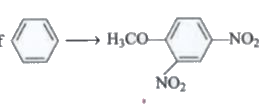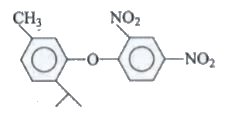Which is best evidence for Lock and key theory (Template theroy)?
Competitve inhibition
Feed back inhibition
Allosteric competition
Non-competitive inhibition
The correct Answer is:A
To determine the best evidence for the Lock and Key theory (Template theory), we need to analyze the provided options in relation to the theory itself.
1. Understand the Lock and Key Theory:
- The Lock and Key theory suggests that enzymes have a specific shape (the lock) that only allows a specific substrate (the key) to bind to it. This forms an enzyme-substrate complex, leading to the formation of products.
2. Examine the Options:
- Competitive Inhibition: In this scenario, an inhibitor that resembles the substrate competes with the substrate for binding to the active site of the enzyme. This is similar to how a key that fits a lock can prevent another key from entering.
- Feedback Inhibition: This is a regulatory mechanism where the end product of a metabolic pathway inhibits an earlier step in the pathway. It does not directly demonstrate the specificity of enzyme-substrate binding.
- Allosteric Competition: This involves the binding of an effector molecule at a site other than the active site, which alters the enzyme's activity. This does not directly relate to the lock and key specificity.
- Non-Competitive Inhibition: Here, an inhibitor binds to an enzyme regardless of whether the substrate is bound or not. This does not illustrate the specific binding characteristic of the lock and key model.
3. Identify the Best Evidence:
- Among the options, Competitive Inhibition is the best evidence for the Lock and Key theory. This is because it directly involves a substrate (or a similar molecule) competing for the active site of the enzyme, demonstrating the specificity and shape compatibility that the theory describes.
4. Conclusion:
- Therefore, the best evidence for the Lock and Key theory is Competitive Inhibition.
- The Lock and Key theory suggests that enzymes have a specific shape (the lock) that only allows a specific substrate (the key) to bind to it. This forms an enzyme-substrate complex, leading to the formation of products.
- Competitive Inhibition: In this scenario, an inhibitor that resembles the substrate competes with the substrate for binding to the active site of the enzyme. This is similar to how a key that fits a lock can prevent another key from entering.
- Feedback Inhibition: This is a regulatory mechanism where the end product of a metabolic pathway inhibits an earlier step in the pathway. It does not directly demonstrate the specificity of enzyme-substrate binding.
- Allosteric Competition: This involves the binding of an effector molecule at a site other than the active site, which alters the enzyme's activity. This does not directly relate to the lock and key specificity.
- Non-Competitive Inhibition: Here, an inhibitor binds to an enzyme regardless of whether the substrate is bound or not. This does not illustrate the specific binding characteristic of the lock and key model.
- Among the options, Competitive Inhibition is the best evidence for the Lock and Key theory. This is because it directly involves a substrate (or a similar molecule) competing for the active site of the enzyme, demonstrating the specificity and shape compatibility that the theory describes.
- Therefore, the best evidence for the Lock and Key theory is Competitive Inhibition.
Topper's Solved these Questions
- ANIMAL TISSUES BOOK - TRUEMEN BIOLOGY ENGLISHCHAPTER - ANIMAL TISSUES EXERCISE - MULTIPLE CHOICE QUESTIONS
193 Videos
- CELL- THE BASIC UNIT OF LIFE ( CELL AND ITS STRUCTURAL ORGANISATION )BOOK - TRUEMEN BIOLOGY ENGLISHCHAPTER - CELL- THE BASIC UNIT OF LIFE ( CELL AND ITS STRUCTURAL ORGANISATION )EXERCISE - MULTIPLE CHOICE ANSWER TYPE
308 Videos
Similar Questions
Knowledge Check
Which is best synthesis of
 ABr2−−→feBr3HNO3−−−→H2SO4HNO3−−−→H2SO4CH3ONa−−−−−→CH3OHBHNO3−−−→H2SO4HNO3−−−→H2SO4Br2−−−→FeBr3CH3ONa−−−−−→CH3OHCHNO3−−−→H2SO4Br2−−−→FeBr3HNO3−−−→H2SO4CH3ONa−−−−−→CH3OHDHNO3−−−→H2SO4Br2−−−→FeBr3NaOCH3−−−−−→CH3OHHNO3−−−→H2SO4
ABr2−−→feBr3HNO3−−−→H2SO4HNO3−−−→H2SO4CH3ONa−−−−−→CH3OHBHNO3−−−→H2SO4HNO3−−−→H2SO4Br2−−−→FeBr3CH3ONa−−−−−→CH3OHCHNO3−−−→H2SO4Br2−−−→FeBr3HNO3−−−→H2SO4CH3ONa−−−−−→CH3OHDHNO3−−−→H2SO4Br2−−−→FeBr3NaOCH3−−−−−→CH3OHHNO3−−−→H2SO4Which is the best leaving group ?
A−⊕N≡NBOH−CNH−2DCH3COO−Which of the following is the best evidence for the lock and key hypothesis of enzyme action?
AAll isolated enzymes have been identified as proteinsBEnzymes determine the direction of a reactionCEnzymes are found in living organisms and speed up certain reactionsDCompounds similar in structure to the substrate inhibit the reaction

